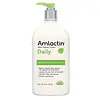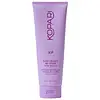What's inside
What's inside
 Key Ingredients
Key Ingredients

 Benefits
Benefits

 Concerns
Concerns

 Ingredients Side-by-side
Ingredients Side-by-side

Water
Skin ConditioningPumice
AbrasiveGlycerin
HumectantLactic Acid
BufferingGlycolic Acid
BufferingCaprylic/Capric Triglyceride
MaskingHydroxypropyl Starch Phosphate
Stearic Acid
CleansingCetearyl Alcohol
EmollientSorbitan Oleate Decylglucoside Crosspolymer
CleansingSodium Lauroyl Sarcosinate
CleansingSodium Hydroxide
BufferingCocos Nucifera Shell Powder
AbrasiveVolcanic Sand
Skin ConditioningAvena Sativa Kernel Extract
AbrasiveSalix Nigra Bark Extract
Skin ProtectingCamellia Sinensis Leaf Extract
AntimicrobialSimmondsia Chinensis Seed Oil
EmollientLactobacillus Ferment
Skin ConditioningGlycyrrhiza Glabra Root Extract
BleachingSorbitol
HumectantDecyl Glucoside
CleansingHydroxyethylcellulose
Emulsion StabilisingLauryl Glucoside
CleansingGlyceryl Stearate
EmollientSodium Methyl Cocoyl Taurate
CleansingSodium Stearoyl Lactylate
EmulsifyingPotassium Sorbate
PreservativeSodium Benzoate
MaskingPhenoxyethanol
PreservativeWater, Pumice, Glycerin, Lactic Acid, Glycolic Acid, Caprylic/Capric Triglyceride, Hydroxypropyl Starch Phosphate, Stearic Acid, Cetearyl Alcohol, Sorbitan Oleate Decylglucoside Crosspolymer, Sodium Lauroyl Sarcosinate, Sodium Hydroxide, Cocos Nucifera Shell Powder, Volcanic Sand, Avena Sativa Kernel Extract, Salix Nigra Bark Extract, Camellia Sinensis Leaf Extract, Simmondsia Chinensis Seed Oil, Lactobacillus Ferment, Glycyrrhiza Glabra Root Extract, Sorbitol, Decyl Glucoside, Hydroxyethylcellulose, Lauryl Glucoside, Glyceryl Stearate, Sodium Methyl Cocoyl Taurate, Sodium Stearoyl Lactylate, Potassium Sorbate, Sodium Benzoate, Phenoxyethanol
 Reviews
Reviews

Ingredients Explained
These ingredients are found in both products.
Ingredients higher up in an ingredient list are typically present in a larger amount.
Glycerin is already naturally found in your skin. It helps moisturize and protect your skin.
A study from 2016 found glycerin to be more effective as a humectant than AHAs and hyaluronic acid.
As a humectant, it helps the skin stay hydrated by pulling moisture to your skin. The low molecular weight of glycerin allows it to pull moisture into the deeper layers of your skin.
Hydrated skin improves your skin barrier; Your skin barrier helps protect against irritants and bacteria.
Glycerin has also been found to have antimicrobial and antiviral properties. Due to these properties, glycerin is often used in wound and burn treatments.
In cosmetics, glycerin is usually derived from plants such as soybean or palm. However, it can also be sourced from animals, such as tallow or animal fat.
This ingredient is organic, colorless, odorless, and non-toxic.
Glycerin is the name for this ingredient in American English. British English uses Glycerol/Glycerine.
Learn more about GlycerinPotassium Sorbate is a preservative used to prevent yeast and mold in products. It is commonly found in both cosmetic and food products.
This ingredient comes from potassium salt derived from sorbic acid. Sorbic acid is a natural antibiotic and effective against fungus.
Both potassium sorbate and sorbic acid can be found in baked goods, cheeses, dried meats, dried fruit, ice cream, pickles, wine, yogurt, and more.
You'll often find this ingredient used with other preservatives.
Learn more about Potassium SorbateWater. It's the most common cosmetic ingredient of all. You'll usually see it at the top of ingredient lists, meaning that it makes up the largest part of the product.
So why is it so popular? Water most often acts as a solvent - this means that it helps dissolve other ingredients into the formulation.
You'll also recognize water as that liquid we all need to stay alive. If you see this, drink a glass of water. Stay hydrated!
Learn more about Water